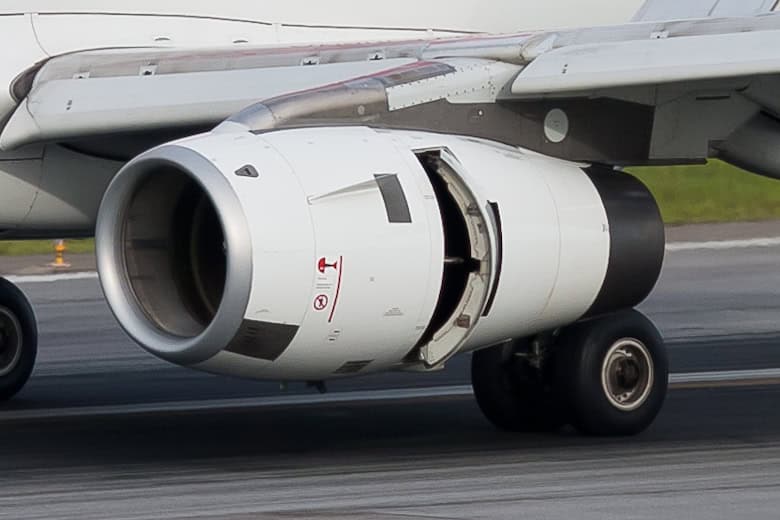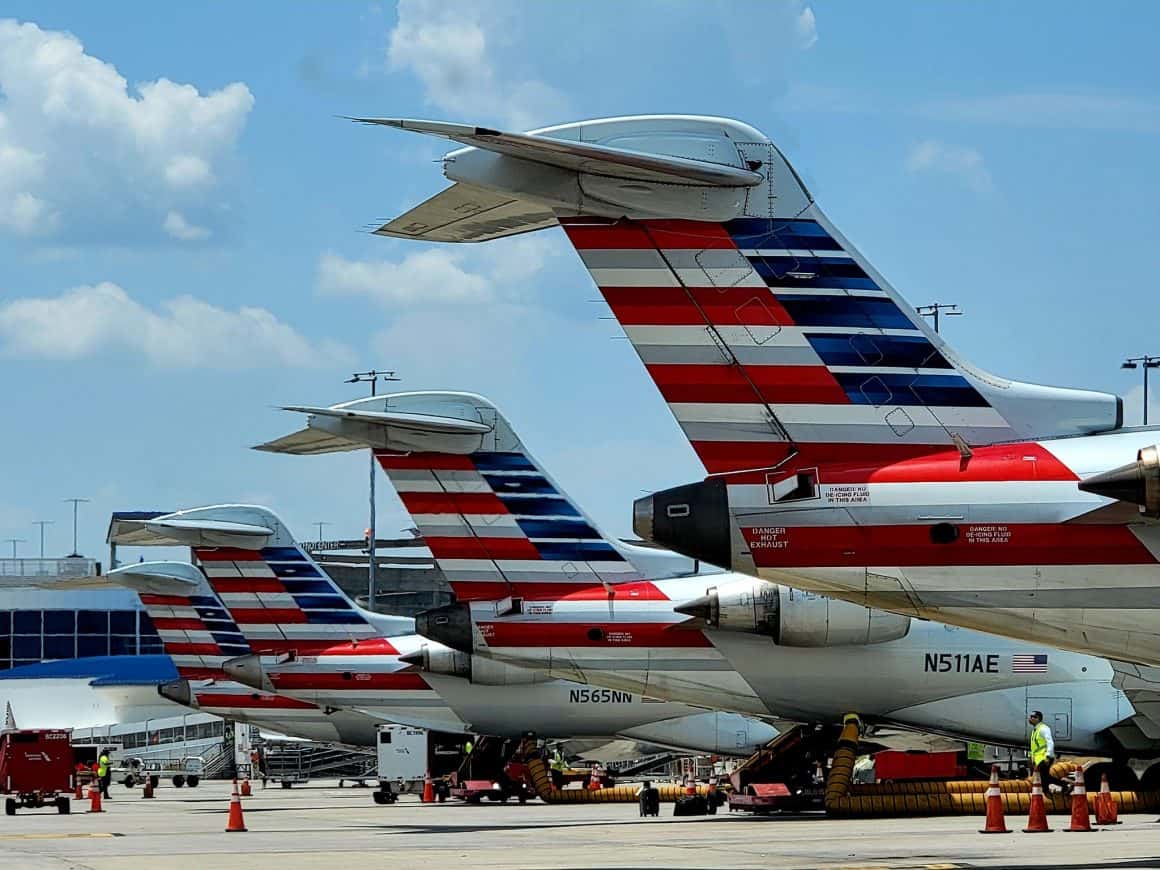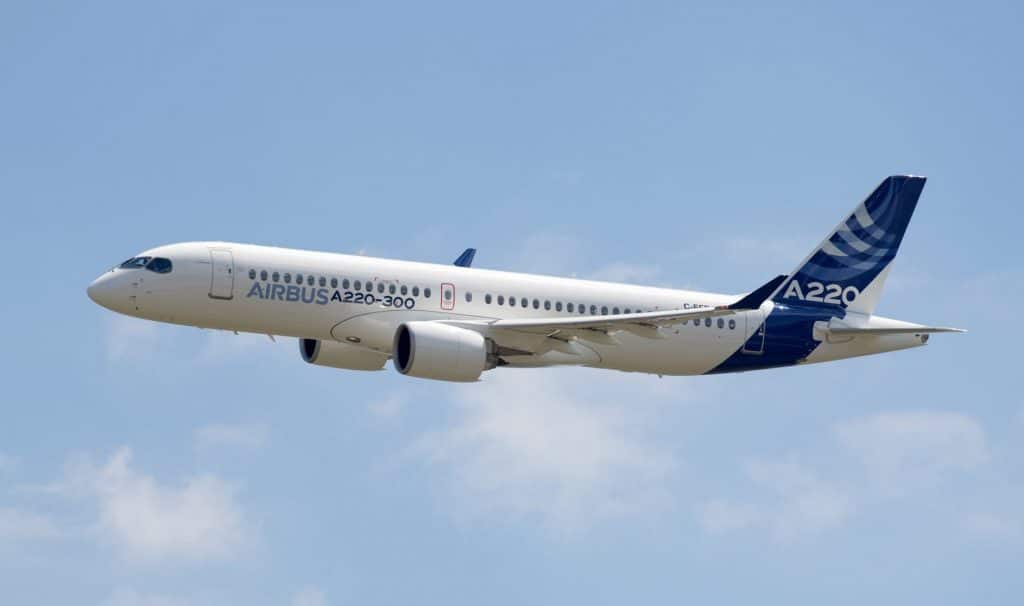Although it never went into production, the Bombardier BRJ-X served as the transition between the company’s initial CRJ regional jets and its subsequent C-Series, which eventually became the Airbus A220.
Origin and Program Evolution of the Bombardier BRJ-X
The initial catalyst for what was intended as an addition to its product line was not the result of an independent effort. Instead, it was Bombardier’s early consideration of acquiring financially troubled Fokker, whose 107-seat F.100 would have given it a larger capacity complement to its 50—to 70-passenger CRJ100s, 200s, and 700s.
After determining the true value of such a possibility by the end of February 1996, however, Fokker withdrew its interest, and Fokker itself declared bankruptcy the following month, on 15 May. Nevertheless, the joint venture exploration prompted Bombardier to design its own successor, the Bombardier Regional Jet eXpansion, or BRJ-X.
Designed for an Emerging Need
An AvStat survey indicated that 4,000 aircraft seating fewer than 110 passengers would be needed from 1999 to 2008, while Bombardier estimated the requirement for 2,500 80- to 110-seaters over twice this period.
It first publicly revealed its new regional jet program at the 1998 Farnborough International Air Show. Its prelaunch phase began the following year, when 14 carriers from seven countries attended the first BRJ-X Airline Advisory Council in Montréal. The Council gave Bombardier a chance to formally introduce the aircraft to its core customers, evaluate its attributes, and incorporate design elements based on input.
“Bombardier has identified a gap in aircraft capacity in the 80 to 110-seat range and we forecast a requirement for 2,500 aircraft over a 20-year delivery period,” said Steve Ridolfi, Vice President, Marketing and Aircraft Programs for Bombardier Aerospace, Regional Aircraft. “The BRJ-X Series would fit between the smaller 50- to 70-seat Canadair Regional Jet family and larger 111-170-seat mainline jet aircraft.”
“The BRJ-X family of aircraft will be designed to have the lowest possible operating costs in terms of fuel, crew, maintenance, and ownership,” he further shared. “Acquisition and ownership costs of these larger regional jets must be kept low since regional airlines are the low-cost producers in the airline industry.”
Early aircraft design feature considerations included the control system (conventional versus fly-by-wire), avionics, hydraulics, electrical power, bake type (steel versus carbon), the auxiliary power unit, and possible inflight entertainment capability.
The Bombardier BRJ-X Was Seen as Fulfilling Several Purposes

It would fill the gap between the smaller 50- and 70-passenger regional jets and the smallest mainline ones, such as the Airbus A318 and the Boeing 717.
The BRJ-X would provide a new-generation, cost-effective replacement for the first-generation twinjets, like the DC-9-30 and the 737-200, and the second-generation ones, such as the British Aerospace BAe-146-200 and the Fokker 100.
It would appear before Embraer’s E-170 to E-195 and Fairchild’s Dornier 728 and -929 regional jets first flew. Because of its capacity, it would redefine the regional jet realm, eclipsing the boundaries of the initial 50-seaters.
It would become Bombardier’s second regional jet design, and also its largest.
The $1 billion, 36-month program, which was to encompass its formal launch, configuration freeze, Joint Conceptual Definition Phase, and certification, would be headed by Boeing executive Gary Scott at the newly established Bombardier Commercial Aircraft (BCA) division in Montréal, separate from the existing Bombardier Regional Aircraft one in Toronto.
Design Features and Versions
Deviating from the aft fuselage-mounted engine and t-tail configuration of its CRJ series, the BRJ-X was to have been a conventional, Boeing 737-resembling one with two under-wing, pylon-mounted turbofans and a low-set tail plane.
Also, unlike its CRJ100 and its successors, it was to have featured a 128-inch-diameter, double-lobe fuselage whose cross section facilitated five-abreast coach seating and provided greater aisle height, increased passenger shoulder room at the sidewalls, and greater underfloor baggage and cargo hold volume. One early overall length projection was 108.9 feet.
A New, Swept Airfoil Would Have Had a 93.8-Foot Span, Again Based Upon Early Projections
Although Bombardier considered the three 19,000 to 22,000 thrust-pound, FADEC (full authority digital engine control) CFM International CFM56-9, Rolls-Royce BR710, and Pratt and Whitney PW6000 turbofans as options, it ultimately selected the latter in 2000, marking only the second time that it had been chosen for commercial application after that for the A318.

Single-class capacity of the initial BRJ-X-90 was to have been 95 at a 32-inch pitch, although a dual-class one was to have entailed eight first class seats at a 36-inch pitch and 80 at a 32-inch one.
Gross weight was originally targeted at 100,000 pounds, but progressively increased. Of the two variants, the baseline one was to have had a 1,500- to 1,800-nautical-mile range, while a BRJ-X-90ER was to have increased this to 2,475 miles, permitting the operation of longer than traditional regional jet sectors, or one-stop transcontinental ones with intermediate refueling. Cruise speed was to have been Mach 0.8.
An early, tentative schedule entailed a first fight in the second quarter of 2002, certification in the third quarter of 2003, and service entry in 2004.
A stretched, 114-foot-long BRJ-X-110, sharing the same wing and empennage, was planned, giving it a 115-passenger, single-class capacity, but an eight-first and 100-economy arrangement would have reduced this to a 108-passenger total.
Program Discontinuation
Bombardier’s reassessment of the regional jet market, which had itself continued to evolve, led to the BRJ-X’s demise.
To reduce both design interval and cost—and thus retain a competitive lead over Embraer’s and Fairchild’s later-appearing aircraft—it replaced its smaller BRJ-X-90 with the 86—to 90-passenger CRJ900, itself a stretched development of the CRJ700.

Squeezed between the traditional 50-seaters and the 100-passenger mainline jets, it realized that the market size for its offering was decreasing, and it certainly did not relish engaging in direct competition with the likes of Airbus and Boeing.
“If that market fragmentation continues with the increased numbers of 50-seaters and 70-seaters we’re placing in it, one has to question whether demand for a replacement 100-seater going forward would necessarily be in the volume that people are thinking of,” Bombardier Vice President Marketing, Trung Ngo, once commented while assessing the situation.

Ultimately, it discontinued development of its larger BRJ-X-110 in favor of its successor, the higher-capacity, longer-range C-Series offered in CS100 and CS300 versions. After Airbus acquired the program, it eventually became the A220-100 and -300.
